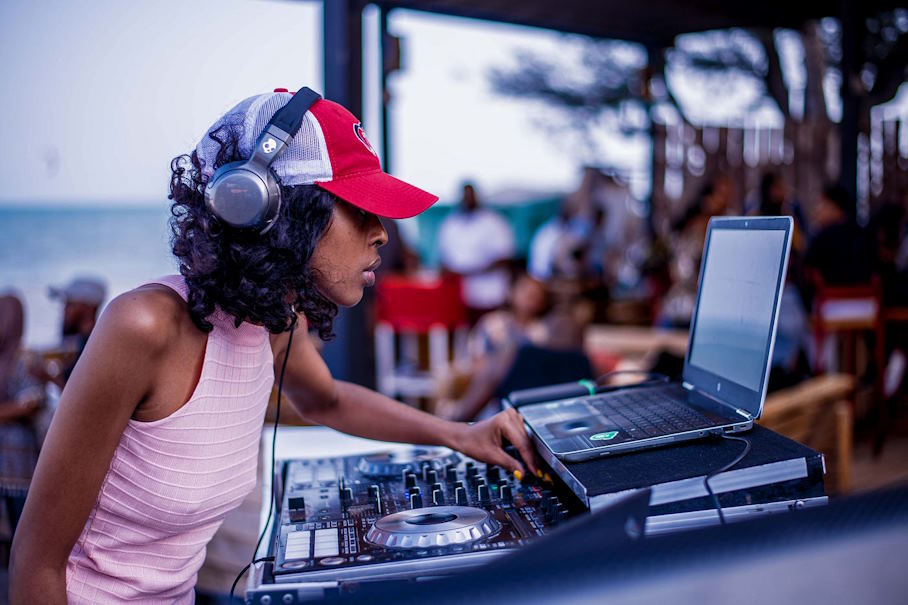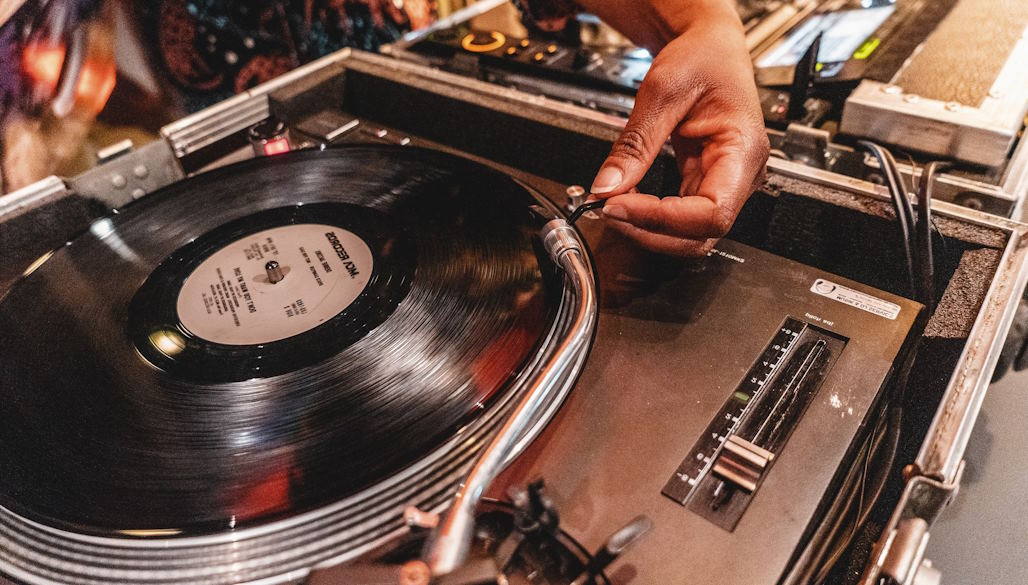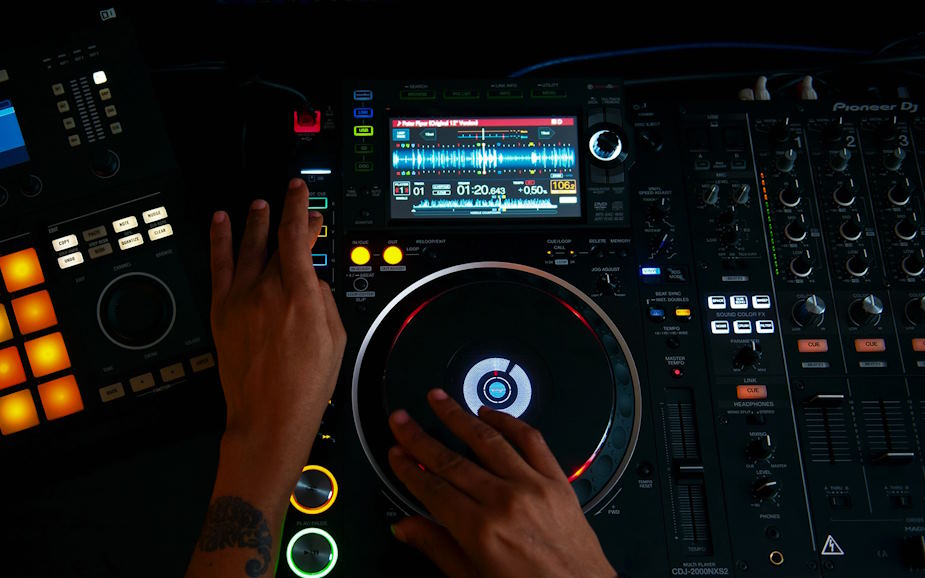In the pulsating heart of the music world lies an art form that transcends the conventional boundaries of melody and rhythm, an artistry that transforms the act of playing music into a dynamic and expressive performance. This art is DJing, a phenomenon that has evolved from its humble origins in the vibrant tapestry of hip-hop culture to become a global force shaping the way we experience and appreciate music. At the core of this captivating realm of DJing is turntablism, a distinctive and intricate craft that elevates the DJ’s role from a mere selector of tracks to a true maestro of sound manipulation.
Essential Equipment for Turntablism
Turntables and Mixers: The Heartbeat of Turntablism
At the core of any turntablist’s arsenal are the turntables and mixers. Turntables serve as the canvas upon which the DJ paints their sonic masterpiece. Whether it’s the iconic Technics SL-1200 series or modern digital turntables, the choice is crucial. Mixers, on the other hand, act as the conductor, blending, equalizing, and manipulating multiple audio sources seamlessly. A quality mixer is essential for executing flawless transitions and crafting a cohesive auditory experience. Selecting an Audio-Technica turntable sets the stage for the art of turntablism, as mixers join forces to establish the groundwork for transforming music into a dynamic and expressive performance.

Needles and Cartridges: Precision in Every Groove
In the delicate dance of needle on vinyl, the importance of needles and cartridges cannot be overstated. These components are the bridge between the physical record and the electrical signals that bring music to life. DJs often choose needles based on their tracking ability, durability, and suitability for scratching. Cartridges, with their role in translating vibrations into sound, add another layer of complexity to the turntablist’s toolkit. The right combination of needles and cartridges is a meticulous choice, as it directly influences the clarity and fidelity of the sound produced, ensuring that every scratch and beat lands with precision.
Vinyl Records vs. Digital Formats: The Analog-Digital Dilemma
In the ongoing evolution of DJ technology, the debate between vinyl records and digital formats persists. Vinyl, with its warm analog sound and tactile feel, holds a special place in the hearts of purists. On the flip side, digital formats offer unparalleled convenience, access to vast music libraries, and advanced features for creative manipulation. Turntablists navigate this analog-digital dilemma based on personal preference, the specific demands of their performance, and the sonic qualities they aim to achieve. Whether spinning classic vinyl or embracing the flexibility of digital, the choice between these formats remains a defining aspect of a turntablist’s identity and style.
Turntablism Techniques: Crafting Sonic Brilliance
Scratching: A Dance of Vinyl and Fingers
- Definition and Origins: Scratching, born from the streets of hip-hop, is the art of manipulating a vinyl record on a turntable to produce rhythmic and percussive sounds. Originating in the ’70s, DJs like Grand Wizzard Theodore and Grandmaster Flash pioneered this technique by accident, creating a revolutionary form of expression.
- Basic Scratching Techniques: Beginners often start with the fundamentals, mastering baby scratches, chirps, and stabs. These basic moves lay the groundwork for precision and control, allowing turntablists to understand the nuances of vinyl manipulation.
- Advanced Scratching Techniques: As mastery deepens, turntablists delve into intricate techniques like crab scratches, flare scratches, and orbit scratches. These advanced moves showcase the virtuosity of the DJ, pushing the boundaries of what’s possible with a turntable and a creative mind.
Beat Juggling: The Percussive Symphony
- Explanation of Beat Juggling: Beat juggling involves manipulating two identical records to create complex rhythms and patterns. DJs craft a percussive symphony by seamlessly switching between beats, pushing the boundaries of rhythm and timing.
- Notable Beat Jugglers and Their Impact: Turntablists like DJ Qbert and the Invisible Skratch Piklz have elevated beat juggling to an art form, inspiring generations of DJs. Their impact extends beyond technique, influencing the very essence of how DJs approach rhythm and composition.
- How Beat Juggling Enhances DJ Performances: Beat juggling adds a dynamic layer to DJ performances, allowing for real-time remixing and reshaping of beats. The technique enhances the DJ’s ability to engage the audience, creating a live experience that transcends the confines of a pre-recorded track.
Transforming and Cutting: Precision in Motion
- Overview of Transforming and Cutting: Transforming and cutting involve manipulating the crossfader and manipulating sound snippets to create seamless transitions and sharp cuts. These techniques are the essence of turntablist finesse, requiring precision and impeccable timing.
- Techniques for Smooth Transitions: DJs master transforming to smoothly morph between tracks, creating a continuous flow of sound. Cutting, on the other hand, involves quick and precise interruptions, injecting energy and surprise into the mix.
- Creative Applications in Turntablism: Transforming and cutting go beyond technical prowess; they are tools for creative expression. Turntablists use these techniques to tell a sonic story, bringing a narrative element to their performances. Whether creating tension or releasing energy, transforming and cutting are the brushstrokes that paint the canvas of turntablism.

